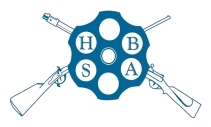L2A3 (Sterling Mk4) 9mm sub machine gun
posted 10 November 2021, 11:26 pm
| 01. Original name | L2A3 Sterling Sub Machine Gun | |
| 02. Other official names | “Patchett” | |
| 03. Popular names | Sterling Mk4 9mm sub machine gun | |
| 04. Chamberings | 9mm Parabellum | |
| 05. Designed by | George William Patchett, Chief Designer, Sterling Armaments Co. Dagenham | |
| 06. Design date | 1944 | |
| 07. In service date(s) | 1953 – 1988 | |
| 08. Adopted by | Adopted by 63 countries around the world. Significant exceptions USA and USSR. | |
| 09. Production quantities | 400,000 + | |
| 10. Mechanism | Blowback, open bolt (advanced primer ignition) | |
| 11. Weight | 2.7kg (6.0lb) | |
| 12. Mountings | ||
| 13. Practicality in action | Designed for use in the right hand but can be used, with care, in the left. Main complaint was that the many projections on the weapon were easy to catch on clothing, equipment, doorways etc. The gun had a reputation for reliability. With practice it was capable of good accuracy particularly when fired in short bursts. | |
| 14. Comments / Other information | The early “trial” guns were know as the Patchett Machine Carbine Mk1. Gun number 078 (currently in Imperial War Museum) was carried by Col. Robert Dawson, Commanding Officer No.4 Commando during the attack on Walcheren in November 1944. (Sterling Mk 4) Sub Machine Gun (UK) Introduced in 1955 – developed from 1953 L2A1; chambered for the 9mm Parabellum round; cyclic rate about 600 rpm; uses 34-round box magazine; weight without magazine 6lb; fitted with folding butt; breech block had external spiral lands to minimise bearing area and remove sand, extremely reliable, even in adverse conditions. |
